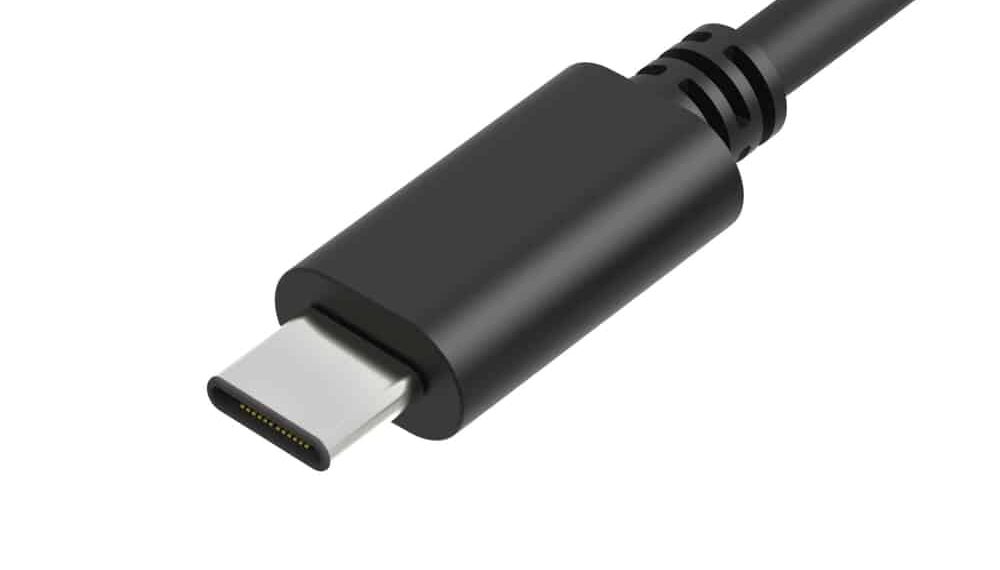
USB Type-C advantages and disadvantages: the former, numerous; the latter, less so.
By design, the electronics industry rapidly evolves with new technologies, but sometimes the result of competing devices and protocols is a market that is more difficult for designers and end-users. There’s no better reminder than a quick view of an old desktop tower and the dizzying amount of connectors: serial, parallel, PS/2, etc. The introduction of the Universal Serial Bus (USB) standard a little over a quarter century ago has, to the benefit of most, rendered many of these formerly central connector systems to legacy status, freeing up board space for designers and simplifying product purchases for end users. The most recent addition to the USB connector system family in 2014 continues to offer a high latitude of design freedom by cooperating with a bevy of partner interfaces for audiovisual output. To empower optimal design and layout, it’s necessary to dive into both USB Type-C advantages and disadvantages.
USB Type-C Advantages and Disadvantages: An Overview
As an evolution of the USB connector system, USB Type-C can be largely seen as an improvement on then-standard connector styles. Improvements never come without some sacrifice, whether an increase in size, complexity, cost, heat, or another design consideration. With nearly a decade since its inception, USB Type-C’s advantages and disadvantages are mostly set. However, some may become more prominent depending on specific use cases. Before diving into each side in greater detail, view some at-a-glance information of the latest USB connector system:
| Advantages | Disadvantages |
|
|
Why USB Type-C is Integral to Today, and Tomorrow’s Electronics
USB Type-C endears itself to modern design requirements for a multitude of reasons. Foremost, the USB standard is quickly building towards an all-in-one solution for a large swath of consumer I/O uses. Alternate modes change the pinout schema while active, allowing USB Type-C connectors to cycle between audio, video, and power while supporting legacy data transfer modes. Not only do users enjoy having a single port to handle all their transfer protocol needs, but designers are also able to reduce layout complexity by removing extraneous connectors.
The Type-C connector can address multiple core design issues simultaneously:
- Simplify enclosure design by reducing the number of off-board interfaces
- One connector standing in for many others theoretically eases procurement (current shortages may undermine the availability of electromechanical connectors)
- The fewer the number of receptacles, the more straightforward testing and defect detection becomes
While design improvements like these don’t jump off the page for the consumer in comparison to the more marketable transfer speeds, the benefits offered by the physical design matter greatly. One of the more immediately noticeable changes is the lack of orientation within the connection system. Both plugs and receptacles are fully reversible, which allows for a reduction in cable strain by ideally canceling out any cable strain with two opposite yet restorative bend directions. While it’s not the smallest of the USB receptacles, it is among the smaller form factors, which aids its adoption in a variety of thin PCBs such as current product lines of cellphones.
As alluded to, the physical features of the USB Type-C connector pale in comparison to the performance associated with the newest transfer protocol. From a consumer standpoint, their electronic devices’ most important general features are speed and power. With the relatively recent introduction of USB4 pushing transfer rates into the 80 Gbps range, file sizes are becoming more trivial than ever. USB Type-C is currently the only connector system that can take advantage of USB4 and will remain that way until its successor.
Maximizing USB Type-C Design by Avoiding Common Pratfalls
No connector system is perfect, including USB Type-C. It is far and away the most expansive option for multiple data transfer modes at high speeds. However, there are some precautions to be aware of due to its power consumption and some incompatibility with older USB connectors. The major consideration is power: USB Type-C is built around a 3A/20V minimum standard, but high-power 5A/20V cables are available. In a world of rechargeable devices, charging speed during power delivery has also become a motivating factor in purchases. Still, mismarketed or defective USB Type-C cables may cause damage when voltage levels between the cable and the targeted device are not properly aligned.
There are two worst-case scenarios to be aware of:
- A USB-A/B plug and USB Type-C receptacle combination are invalid and not covered by the USB Implementers Forum’s standards.
- A valid combination of USB-A/B and USB Type-C plugs and receptacles may still be non-compliant due to a lower-than-expected pullup resistor value, which can cause a device to draw power above maximum ratings.
One final design aspect for power/data delivery is cable length. Most end users prefer longer cable lengths to avoid constraining usage to a short distance between linked devices. However, longer cable lengths (>1m) do not support the USB 3.x+ feature set, with the longest cables only allowing for USB 2.0 transfer speeds.
Audiophiles may want to take heed with USB that sound quality can become highly dependent on the audio format output from the device and the adapter. Systems with onboard digital-to-analog converters (DACs) can output analog to passive listening devices (those without DACs) or digital signals to active listening devices. Adapter DACs will take precedence over those contained onboard. However, there is no support for passive listening devices and systems without an onboard DAC. While an unlikely situation, design teams should be cognizant of how different passive or active devices interact.
Over the past decade, designers have become well-acquainted with USB Type-C’s advantages and disadvantages. The connector system has established itself as the de facto data and power transfer for modern electronics over the past decade. Falling costs due to a maturation of manufacturing processes and the continued development of USB4 technology have made its inclusion mandatory across many devices.
Design teams can simplify the addition of USB Type-C receptacles – and millions of other common electronic components – by working with Ultra Librarian to streamline their workflow and ensure their time is best spent on product development instead of land pattern maintenance.
Working with Ultra Librarian sets up your team for success to ensure streamlined and error-free design, production, and sourcing. Register today for free.








